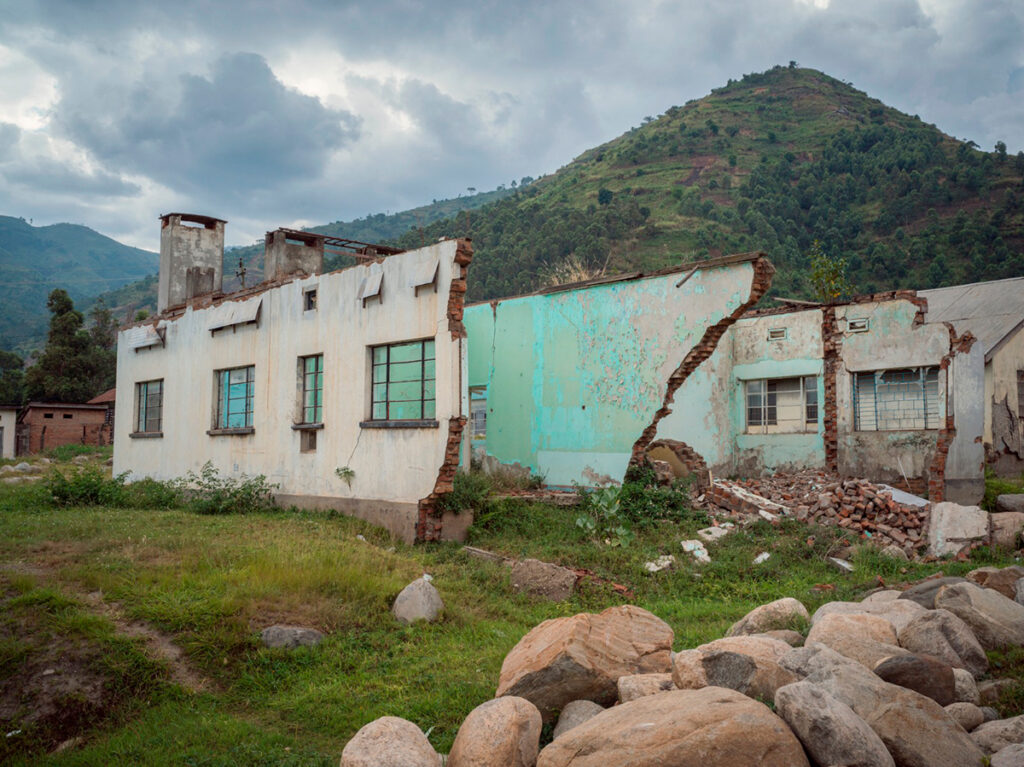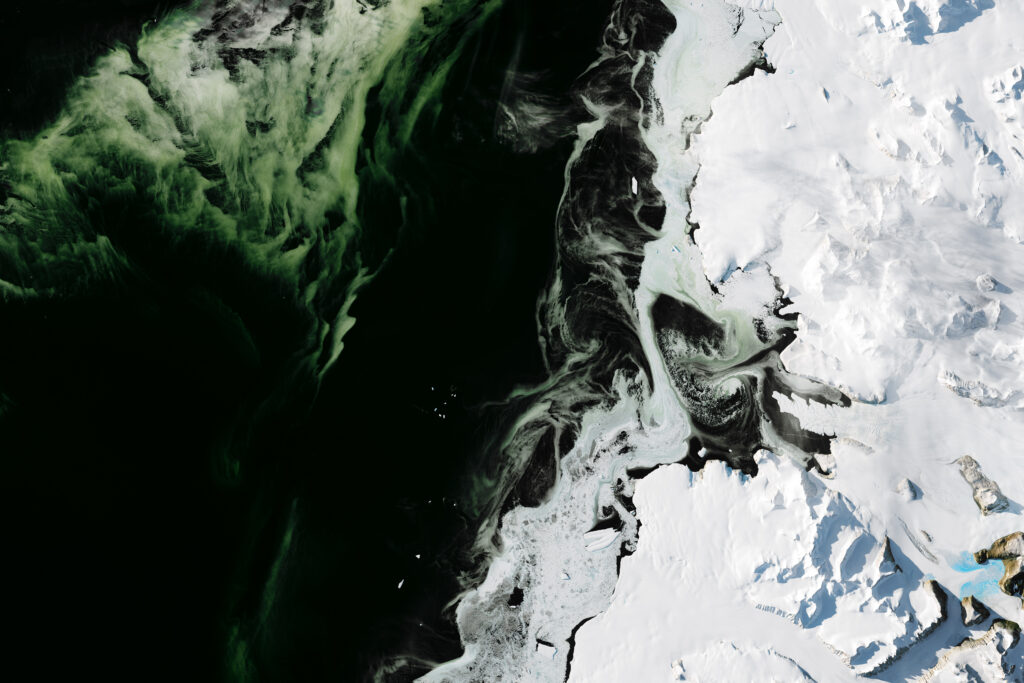Klaus Thymann representing Denmark in the photo exhibition Forever Changes at COP26 in Glasgow
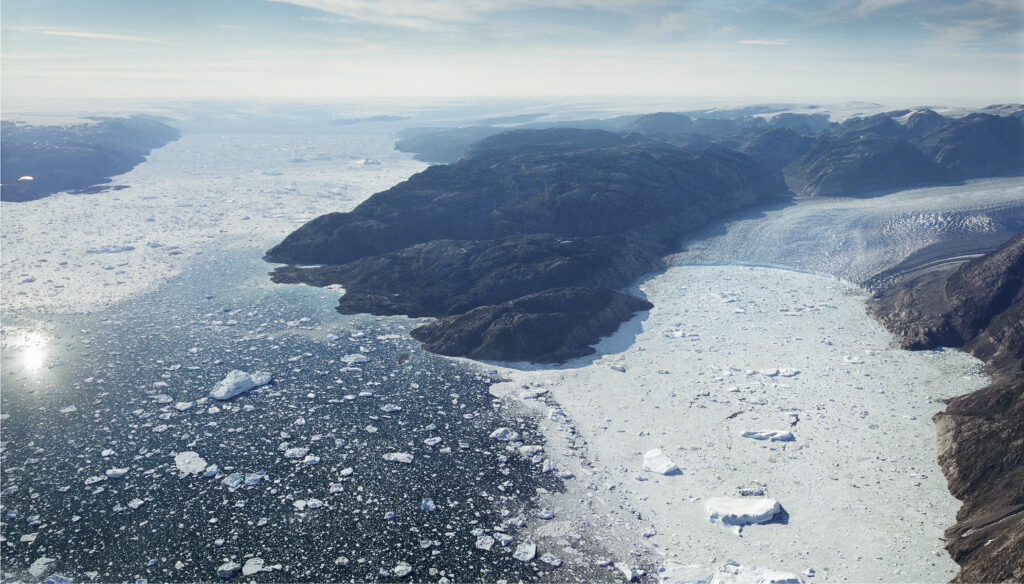
East Greenland, Helheim, 2012. © Klaus Thymann
The Danish photographer and Project Pressure founder Klaus Thymann’s work will be displayed at the exhibition Forever Changes, a collaboration between the Nordic embassies in the UK and the gallery Street Level Photoworks in Glasgow. Thymann is supported by the Embassy of Denmark.
The gallery will exhibit contemporary photography from the Nordic countries addressing climate change, sustainability and conservation of the planet. Forever Changes is a call to action and addresses the urgent need to influence change not only for the protection of the planet but also for a better world.
The exhibition opens at the same time as the most important and urgent Climate Change Summit to date – COP26 – which takes place in Glasgow between 31 October – 12 November 2021.
In support of the exhibition, Thymann has created a public art-intervention using stunning imagery overlaid with surprising and potent messages to be displayed in the public on billboards around Glasgow during COP26.
About Klaus Thymann
Danish born Klaus Thymann is a multi award-winning photographer, filmmaker, explorer, writer, creative director and environmental consultant with an Environmental Science degree. Thymann has worked extensively on projects which he is passionate about with a clear focus on climate and the environment. He has developed an original viewpoint, utilising a cross-disciplinary skillset combining journalism, image making, mapping, documentary and exploration applied to contemporary issues and the present climate emergency.
In 2008 he founded the charity Project Pressure – visualizing climate crisis. This charity is collaborating with world-renowned artists creating and exhibiting work to engage emotions in order to incite climate action. Project Pressure has forged partnerships with World Glacier Monitoring Service and NASA among others. Further recognition and funding have come from prestigious beneficiaries including the Queen of Denmark, Arts Council England, the Swiss Environmental Ministry and Hasselblad.
Read more about Klaus Thymann here.
Meltdown – Exhibition Opening
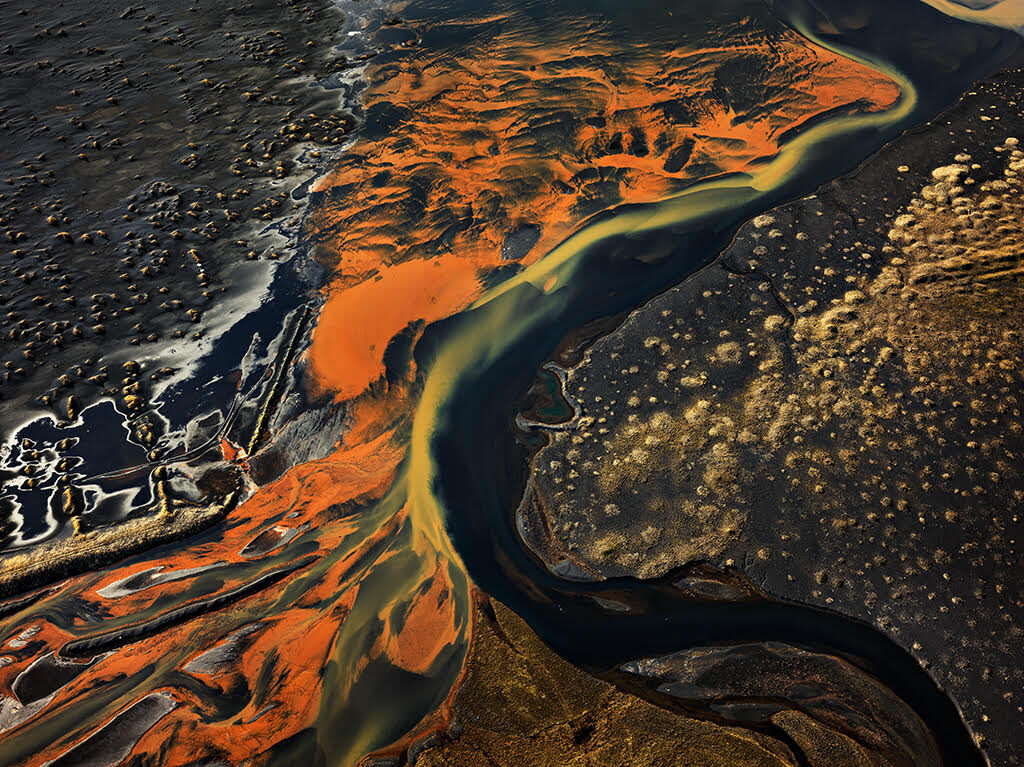 Edward Burtynsky, Affall River on Landeyjarsandur, 2012
Edward Burtynsky, Affall River on Landeyjarsandur, 2012
Project Pressure is proud to announce the dates for MELTDOWN at the Jakopič Gallery. The show brings to life the climate change exhibition in Ljubljana 2022. The exhibition aims to challenge societal preconceptions on the climate crisis through a powerful exhibition which chronicles the disappearance of glaciers and their effect on the world.
Each artist that collaborated on the exhibition will render their personal perspective on climate change through an array of visual mediums. The show will present pieces ranging from images of the Antarctic to newly exposed artefacts previously left undisturbed in the ice. The diversity of the works will highlight the unalterable loss of glacial mass noticed across the world and the subsequent climatic consequences we face. Project Pressure looks forward to showing the exhibition at the gallery from the 18th of January 2022 until the 1st of May 2022.
Based in Ljubljana, Jakopič Gallery is a modern art gallery that is embodied by Roman ancient structures which accentuate its various exhibitions. Its respected reputation was demonstrated since its original foundation in the mid-1970s through organizations such as U.N.E.S.C.O. From its outset, it has hosted countless shows ranging from local to internationally renowned artists.
For further updates on Project Pressures MELTDOWN at the Jakopič Gallery, sign up to our newsletter.
World Water Day
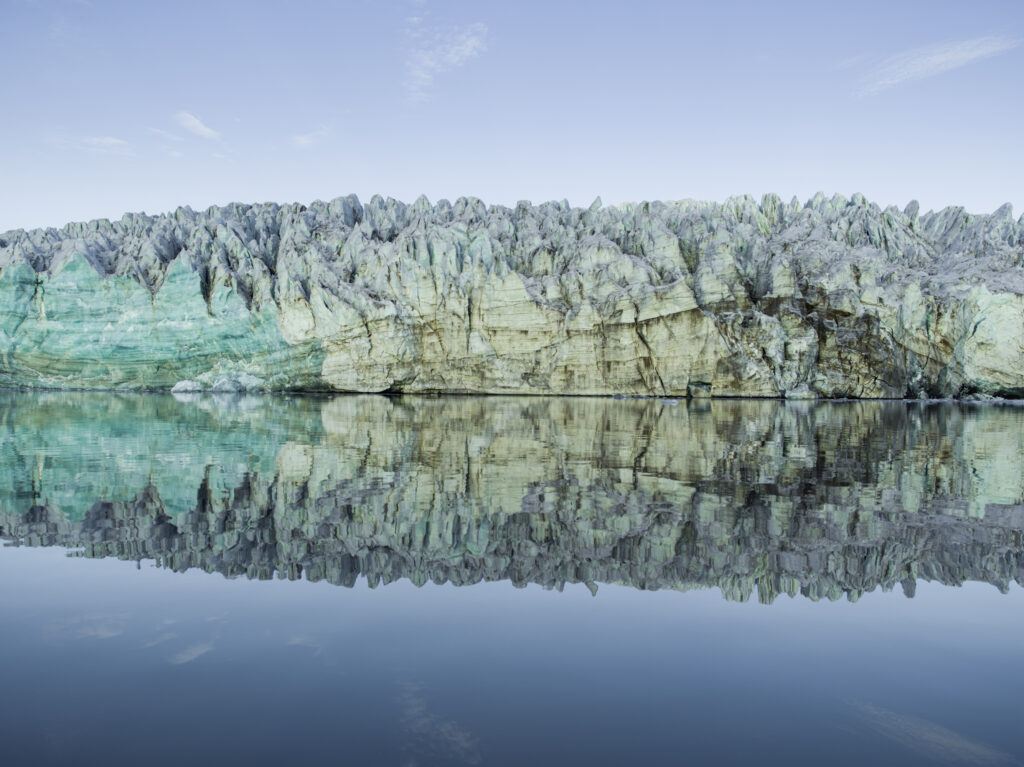 Corey Arnold: Esmarkbreen II, 2013.
Corey Arnold: Esmarkbreen II, 2013.
At Project Pressure, water shapes our work.
March 22. marks the UN World Water Day 2021. The United Nations advocate for sustainable freshwater management, and the day is used to focus on the many challenges communities around the world are facing due to water scarcity and climate change, and the value which water holds.
As greenhouse gas emissions raise temperatures all over the globe, glaciers and ice sheets melt, and the cryosphere, the parts of Earth’s surface covered with frozen water, loses mass. This is critical, as about 69 percent of the freshwater on Earth is held in ice caps and glaciers, the latter alone covering about ten percent of all land. As ice in the polar regions melt, freshwater mixes with sea water, influencing ocean currents globally. The solid, bright surface of the cryosphere reflects heat from the sun, and plays a significant role in regulating our planet’s temperatures.
Water held in ice is also a vital resource for communities around the globe: For the people in the Andes water is scarce and glaciers play a significant role in water security. In the Himalayas, often referred to as “water towers of Asia”, a billion people depend on meltwater from the glaciers and snowpack in the mountains.
The cryosphere is an indispensable part of our global climate system, but severely threatened by rising temperatures.
At Project Pressure our mission is to create change through action, visualizing and documenting the climate crisis. Please get in touch with us at admin@project-pressure.org if you need more information or image material for your organization!
Read more about the UN World Water Day here.
Risk reduction in a time of climate crisis.
Remains of flood damaged building, Uganda © Klaus Thymann, 2020
Today, the 13th of October, marks the UN’s International day for Disaster Risk Reduction. From 2000 to 2019 more than 1.5 million people died because of disasters, and more than 4 billion people worldwide were affected hereby. As governments fail to commit to fighting climate change, these numbers will increase. As shown by the current Covid-19 pandemic, unprepared and badly structured disaster risk governance is catastrophic. Climate change is gravely exacerbating disasters, but it is crucial to address the systemic risk following climate change, not just the singular natural hazards.
We do not need more statistics telling us how another flooding, hurricane or wildfire is XX% more likely to occur because of climate change. We need to address the underlying condition triggering these events, the extra weight on the tipping scale; if it weren’t for climate change, these catastrophes would not happen at such a frequency and with such an intensity. Simply put, we need urgent climate change action.
The UN initiated the International Day for Disaster Risk Reduction in 1989, to promote risk-awareness and disaster reduction amongst communities around the globe. This year’s theme is Disaster Risk Governance. Mami Mizutori, The Secretary-General’s Special Representative for Disaster Risk Reduction, states:
“COVID-19 and the climate emergency are telling us that we need clear vision, plans and competent, empowered institutions acting on scientific evidence for the public good (…) We have learned from the worst single disaster of the 21st century so far, that if we do not strengthen disaster risk governance to take on the challenge of existential threats, we are doomed to repeat the mistakes of the last eight months which have cost so many lives and damaged the health and economic and social well-being of millions.”
By giving recognition to the International Day of Disaster Risk Reduction, we hope to shift the focus to how to actively prevent disasters – not only reacting to the aftermaths. In order to take on the climate crisis and create resilient communities, systemic change is needed. Make your voice heard; demand change from your policymakers and vote!
At Project Pressure our mission is to create change through action, visualizing and documenting the climate crisis. As a non-profit charity, we are dependent of contributions to continue our work. Please consider supporting us – get in touch at admin@project-pressure.org.
Landscapes as collective memory.
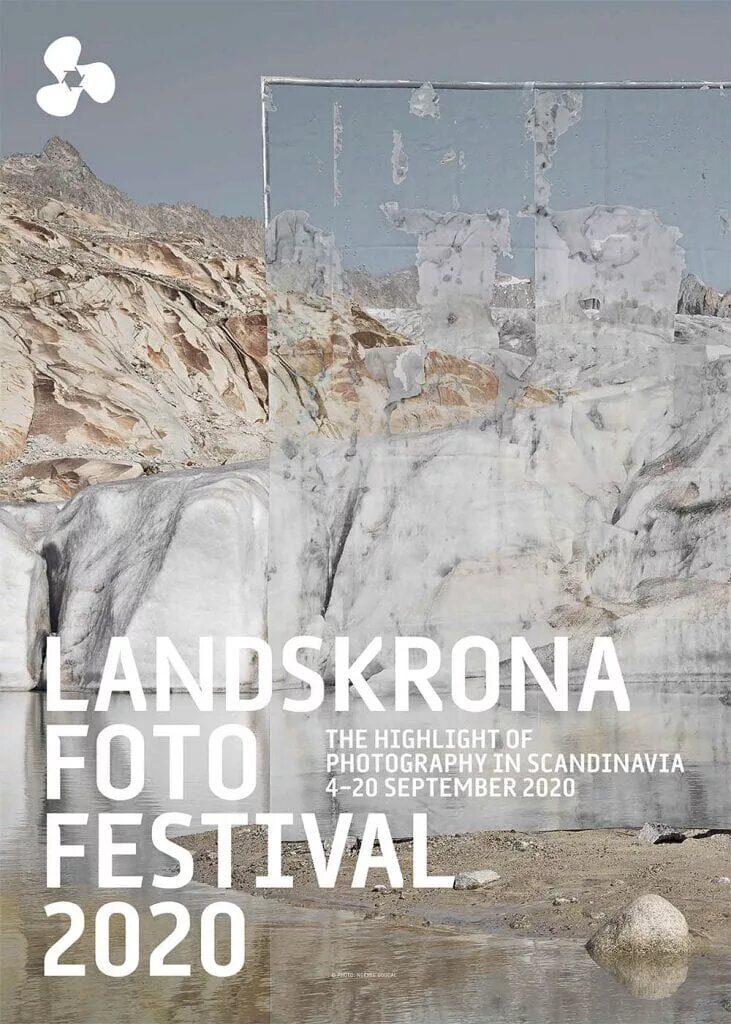
Poster image: Glaciér 2, 2016. © Noémie Goudal for Project Pressure.
Project Pressure will appear as one of the key components in the 7th edition of the Landskrona Foto Festival opening the 4th 2020 in Landskrona, Sweden, with the theme “The Architecture of Memory.”
Project Pressure’s inclusion in the event is an important acknowledgment of the urgency of our mission. Earth’s threatened landscapes are our greatest resource of collective memory; the importance of recognizing and responding to climate change has never been more pressing.
Landskrona Foto Festival will be showing work from the project “Meltdown”, by the Project Pressure commisioned artists:
Edward Burtynsky (Canada) Burtynsky’s work explores the waste Icelandic landscape and the flows of meltwater from the glaciers through large scale drone photography.
Peter Funch, (Denmark) Using the photographic technique of RGB tri-color seperations, Funch recaptures mountain peaks and glaciers from old postcards and photographs, showing the changing landscape though time.
Noémie Goudal (France) In the series “Glacier“, Goudal experiments with visualizing the consistently changing glacial landscape. Her large-scale installations show the slow disintegration of photographs printed on biodegradable paper, placed in front of the glacier which the printed image itself portrays.
Klaus Thymann (Denmark). Through mapping and exploring white spots on the map, Thymann’s practice explores glaciers as a global phenomenon, highlighting the consequences of climate change induced temperature rises around the globe.
Project Pressure will also be participating in a program of online artist talks and Q&A’s. In accordance with COVID-19 safety guidelines, the exhibition will be held outdoors. For more information about the festival, visit https://www.landskronafoto.org/en/ .
COVID-19 and a planet on fire.
Antarctica, 2017 © Michael Benson.
In a critical moment, Covid-19 has put the environmental agenda off the table. Although the last months’ worldwide economic shutdowns have resulted in momentarily slowing down the rise in CO2 levels, the proportionally small-scale slowdown is without any long-term impact on the already enormous masses of CO2 built up in the atmosphere. If anything, the halt in production seems to have created a false sense of hope and security, making it easy to lose sight of the imminent risks of a global climate crisis. A new report shows how crucially change is needed.
In the recently published annual report of the Committee on Climate Change, the committee advises the UK government to prepare for a 4°C temperature rise, an ominous change from the previously 2°C. A 4°C future is widely viewed as a complete collapse of ecosystems and global economic systems alike, beyond adaptation or rescue.
With the alarming prospect of even higher temperature rises than previously assumed, the CCC urges governments to turn the COVID-19 crisis into a ‘defining moment in the fight against climate change’. The current global pandemic has made it clear that planning for systemic risk is necessary and unavoidable; effectively slowing down the increasing levels means long-term systemic change.
As some countries slowly start to emerge on the other side of the pandemic, trying to stimulate their stagnant economies, a raise in emissions is expected. This rebound further illuminates the inequality in regard to countries causing the most CO2 emissions, while harvesting the benefits thereof (America, Europe, Russia and China) and those who get to face the destructive environmental consequences: the brown and black countries of the Global South. Countries who only recently were able to begin rebuilding from centuries of colonialism are now facing the environmental debt of industrialization and western countries who build their economies on exploitation and extraction – on dramatically changing the climate.
The difference of speed in which both governments and individuals were able to change and re-organize societies when faced with the immediacy of Covid-19, as opposed to the hesitant reaction towards the long-term challenges of the climate crisis, is significant.
However abstract and distant the consequences of rising temperatures might seem, the new report from the CCC shows that they’re not. Project Pressure works with closing that distance by portraying and making visible these changes.
Over 30 ways you can help combat climate change – from home.
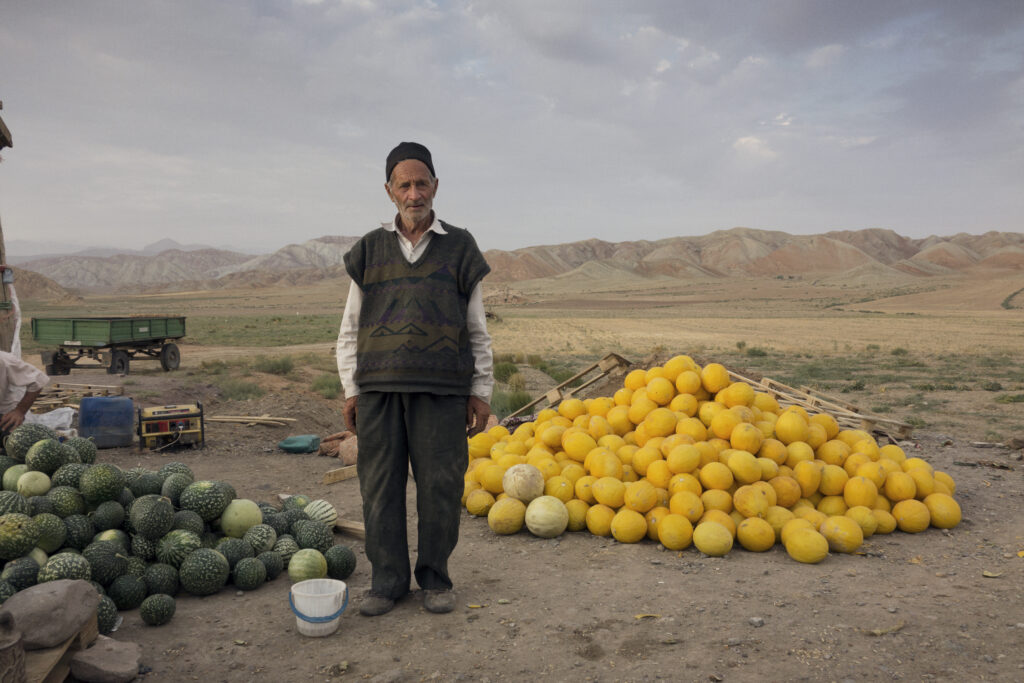
Sabalan, Iran, 2014. © Klaus Thymann
With the pandemic currently dwarfing news outlets, the on-going climate crisis appears a very distant threat. Crucial climate negotiations have been derailed, recycling is on hold and there’s worrying news of rollbacks on environmental regulations across the globe.
However, there are still loads of ways you can help the climate effort. Organised into the categories of Food, Internet, Transport and Energy, we’ve put together a list of impactful measures you can take today and from home. Of course, climate change action should not fall on the shoulders of the individual and we must push for systemic solutions. But we must also recognise the vital role of individual actions, for instance, how they can provide a tangible connection to seemingly impossible climate goals. These acts may seem small, but collectively – we have the power to make a difference.
FOOD
Plant-based diets
If you don’t know about the environmental impacts of animal agriculture by now – what cowpat have you been hiding under?
If you’re reducing your consumption of animal products, whether that’s by being vegan, vegetarian, pescatarian or flexitarian, it’s guaranteed to have a big environmental impact. A diet that excludes animal products reduces the land used for food by 76%, greenhouse gas emissions produced by food by 49%, acidification by 50%, eutrophication by 49% and scarcity-weighted freshwater withdrawals by 19%.
Source: Reducing food’s environmental impacts through producers and consumers (Poore & Nemecek, 2018).
Reducing food waste
Household food waste makes up 70% of all food waste post-farm gate. Here are some tips to reduce the food waste impact on the planet and your pocket:
• Plan meals
• Don’t shop when you’re hungry
• Freeze leftovers
• Learn how to store food effectively, e.g. keep your bananas separate as they ripen other fruits
• Be creative with leftovers, e.g. potato peel crisps
• Make over-ripe fruit and veg into smoothies, bread, jam, sauces or soups
• Know the difference between use-by and best-before dates
• Try ‘ugly’ fruit and veg box schemes, e.g. Oddbox (UK)
Home composting
Home composting is a fantastic way to use up those last few scraps after following the food waste tips above. Some of the most popular options include the Bokashi system and worm composting. These systems can be bought online and are easy to set up.
The Bokashi system is an anaerobic composting system, which uses inoculated bran to ferment kitchen waste. Unlike other forms of composting, this method allows you to throw in meat and dairy scraps. Although the material produced can’t be applied directly to the garden as mulch, the liquid by-product can be fed to plants directly. After fermentation, the solid material is usually buried in trenches or added to a traditional compost heap for further breakdown.
Worm composting, a.k.a. vermicomposting, efficiently produces nutrient-rich compost and concentrated liquid fertiliser. Despite its reputation, if care is taken to set the system up correctly your compost bin shouldn’t be smelly. A downside is that you can’t put cooked food, meat, dairy, citrus or alliums in your worm compost bin.
INTERNET
Did you know that one Google search creates 2-7 g of CO2? 7 g of CO2 is enough to boil a pot of tea or drive a car 52 feet.
The Internet currently produces around 2% of global CO2 emissions and this figure is increasing rapidly. Here are some ways you can reduce your online carbon footprint:
• Reduce email activity – limit the use of the “reply all” option and unsubscribe from unread newsletters.
• Choose a green cloud provider such as Google – the company achieved its goal of running all clouds on renewable energy in 2018.
• Download Spotify playlists and other media for repeat use instead of streaming them.
• Turn devices off – computers continue to use energy even when sleeping.
• Kill the vampire power – unplug chargers that aren’t in use.
• For quick searches, use a tablet or smartphone rather than a laptop or desktop.
Our carbon footprint calculator is powered by carbon neutral servers, and since 2008 when Project Pressure was founded, our website has been hosted on servers powered by renewable energy. Give it a try and learn how you can make further changes to reduce your environmental impact.
TRANSPORT
With travel restrictions still in place, it might seem like an odd time to talk about transport. However, it’s exciting to see a renewed interest in cycling during the lockdown; bike shops have been overrun with customers and the industry is having a hard time keeping up with demand.
Fewer cars on the road mean that biking or walking around cities is currently much safer. New footpaths and bike lanes are popping up all over the world, from Berlin to Mexico City. This may be a temporary measure, but it could help us re-imagine city transport. If there’s no change happening in your area, could you write to your local council and urge them to make more space for walking and cycling?
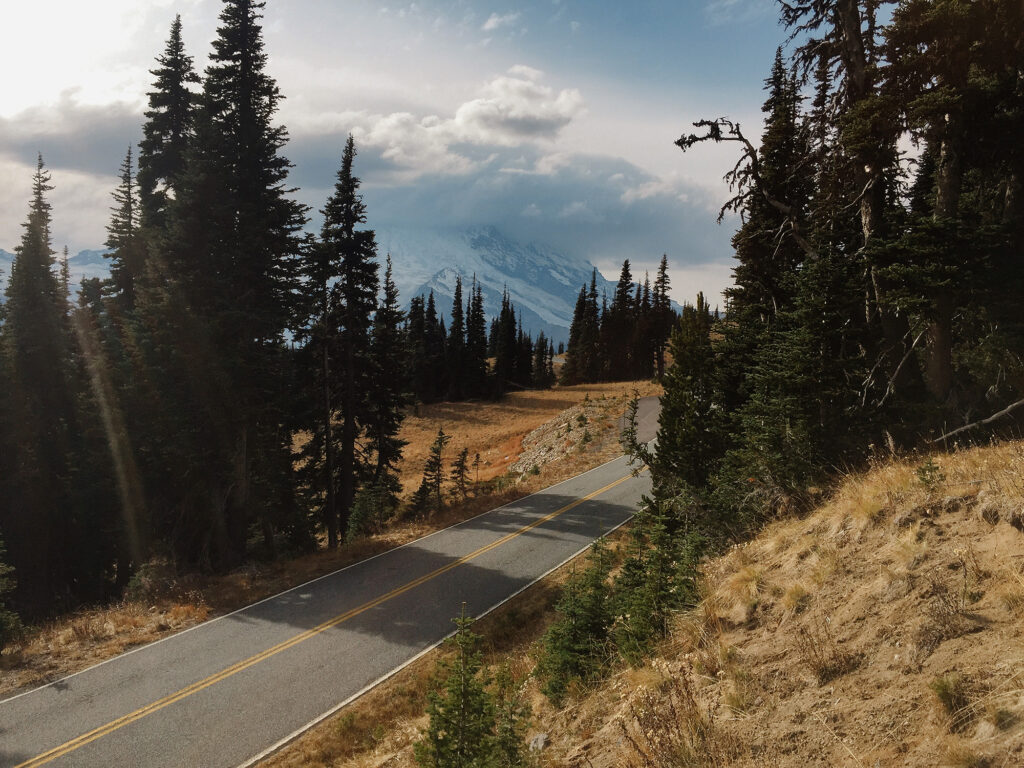
Mount Rainier National Park, 2015. © Peter Funch
ENERGY
Switch your energy supplier or tariff
As more and more of our electricity is coming from low-carbon sources, we are all likely using some green electricity (whatever tariff we are on). However, choosing a green tariff increases the demand for these choices and sends a vital message. The greater number of green tariffs in recent years shows that the energy industry is listening.
Here are some green energy suppliers in the UK:
• Good Energy
• Green Energy UK
• Ecotricity
And for the US:
• Green Mountain Energy
• Bloom Energy
• Ocean Renewable Power Company
Energy efficiency
Energy efficiency has a multitude of benefits: it makes your home warmer, alleviates the causes of damp and mould, lowers energy bills and decreases your carbon footprint. The following measures can help increase the energy efficiency of your home.
Low cost:
• Low energy light bulbs (LED or CFL)
• Draught proofing windows and doors
• Reflective panels or foil behind the radiators
• Lagging hot water pipes and tanks
• Closing the curtains at dusk
• Water-efficient shower heads
Medium to high cost:
• Loft insulation
• Cavity wall insulation
• Double-glazing
• Hot water cylinder jackets
• Heating upgrades or heating system repairs
Energy-saving behaviours can also be easily implemented:
• Don’t overfill the kettle
• Turn appliances off and avoid standby
• Switch off the lights when leaving a room
• Wash clothes at 30 °C
• Turn the heating down 1 °C
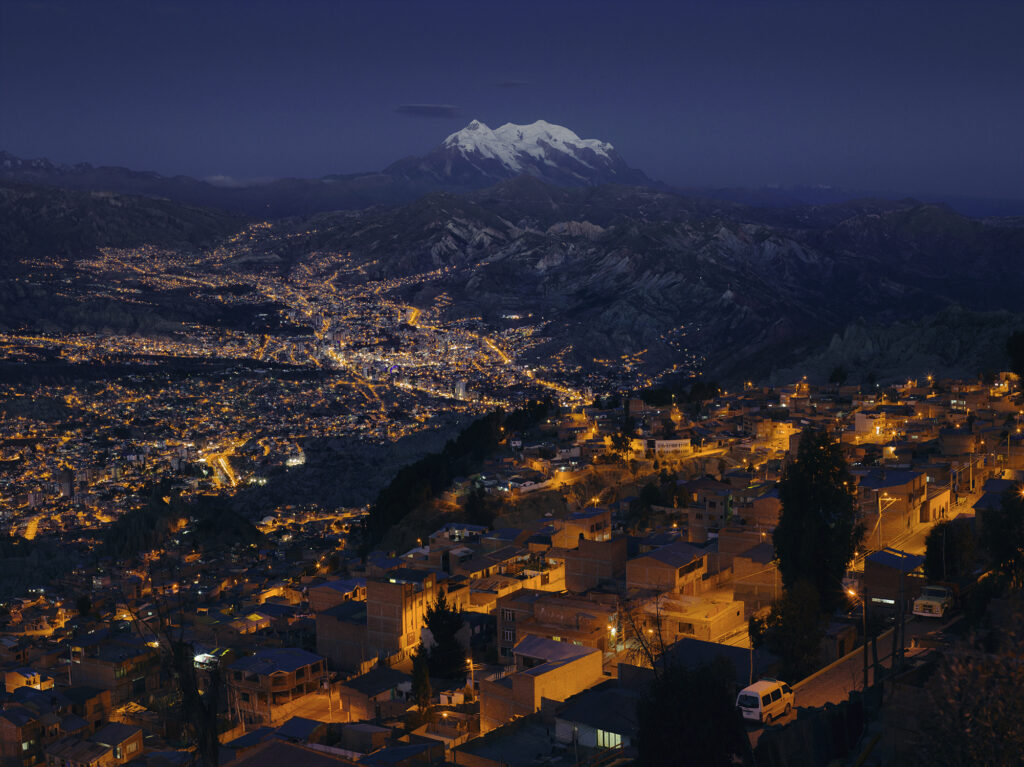
Mount Illimani watches over La Paz, Bolivia, 2013. © Klaus Thymann
Project Pressure wins in the Landskrona Foto Festival open call
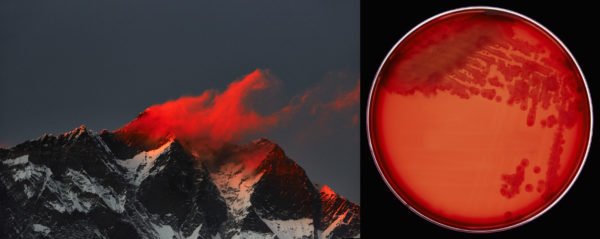
As 2019 comes to an end, we’re delighted to announce that Project Pressure has been selected as one of four featured projects in the 2020 edition of the prestigious Landskrona Foto Festival.
Chosen from 888 applications representing 68 countries as part of an open call, Project Pressure’s work will be a keystone exhibit at the festival, shown alongside works by photographers Lesia Maruschak, Emily Graham, and Rodrigo Orrantia.
An annual event hosted in Skåne, south Sweden, the Landskrona Foto Festival transforms the region into a thriving home for photography in Scandinavia. The next edition of the festival takes place in September 2020 and will be themed around memory – an event dedicated to exploring the phenomenon’s role in the construction of reality, as well as the social impact of collective memory.
Project Pressure’s inclusion in the event is an important acknowledgment of the urgency of the charity’s mission. Earth’s threatened landscapes are our greatest store of collective memory, while the importance of recognising and responding to rapid changes in our environment has never been more pressing. We’re delighted to have been chosen to exhibit in the the Landskrona Foto Festival, and look forward to welcoming you to Skåne in September 2020.
Meltdown in The Observer
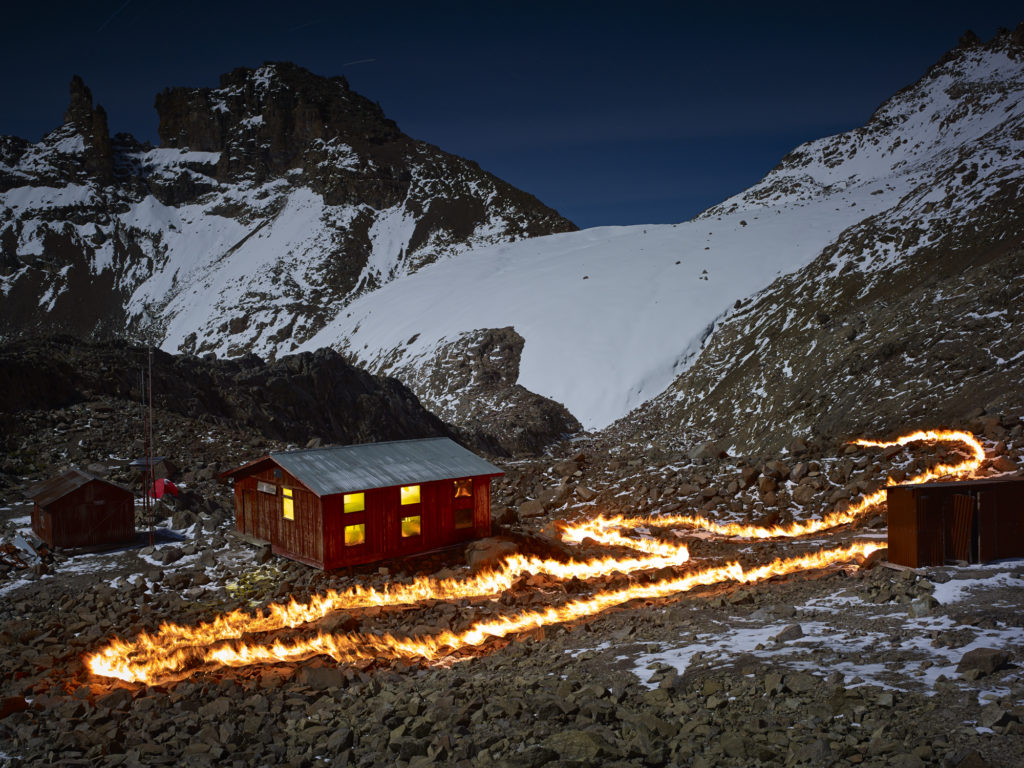
Simon Norfolk, The Lewis Glacier, Mt Kenya, 1963 (A), 2014.
“‘What is it about those melting glaciers and desperate polar bears that makes us want to look away?” the activist and author Naomi Klein asked in 2015. In her book This Changes Everything, she laid the blame on powerful global corporations and acquiescent governments, which both simultaneously underplay the scale of the climate emergency and exploit our collective sense of helplessness in the face of it. Since then, a new urgency has driven climate activism, most successfully in the disruptive protests of Extinction Rebellion. Can art, though, have a meaningful role in raising awareness of that urgency?
A forthcoming exhibition, Meltdown: Visualising Climate Change, at the Horniman Museum in London sets out to answer that question in the affirmative. It focuses on the fate of the world’s glaciers through the prism of art, photography and film. “We are using art as a kind of seduction to draw people in, then shock them,” says photographer Simon Norfolk, one of the artists involved.”
Sean O’Hagan has kindly written about our upcoming exhibition in The Observer. Read the full story here
Exhibition opening the 28th of Nov at the Horniman Museum and Gardens, London.
MELTDOWN at The Horniman – Opening Nov 28
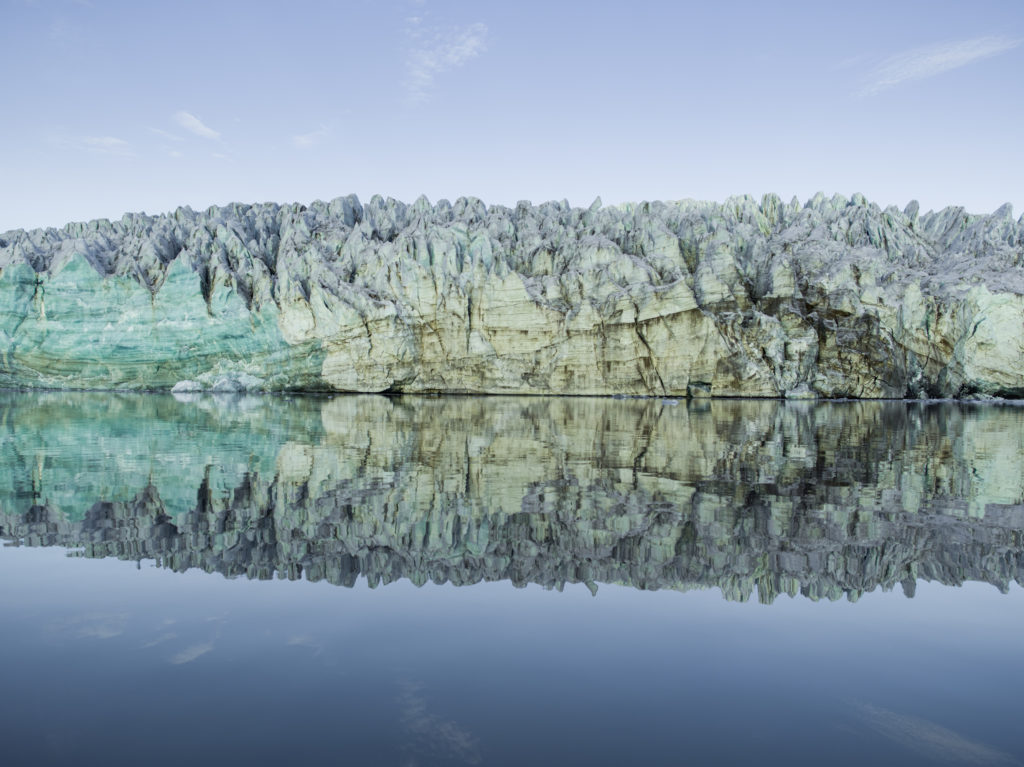 Corey Arnold, Esmarkbreen II, 2013
Corey Arnold, Esmarkbreen II, 2013
MELTDOWN – Visualizing the Climate Crisis by Project Pressure emphasises the importance of glaciers in a scientific, illustrative and dramatic way. The upcoming show at The Horniman Museum and Gardens, London features work from every continent, leading the viewer on a journey in three chapters – The Importance of Glaciers, Current Issues and Meltdown Consequences.
Since 2008 the climate crisis charity Project Pressure has been commissioning world-renowned artists to conduct expeditions to document changes to the world’s vanishing glaciers, the consequences for billions of people, and efforts made to limit melting.
The works featured from these expeditions range in scale from the planetary level to microscopic biological impact, with artistic interpretations giving unique insights into the world’s cryosphere, its fragile ecosystem and our changing global climate.
Nov 28 2019 – Jan 12 2020
Mon – Sun, 10.00 am – 5.30 pm (closed Dec 24-26)
Free admission
Featured artists are: Corey Arnold (US), Michael Benson (US), Broomberg & Chanarin (RSA/UK), Edward Burtynsky (CA), Scott Conarroe (CA), Peter Funch (DK), Noémie Goudal (FR), Adam Hinton (UK), Richard Mosse (IRE), Simon Norfolk (NG), Christopher Parsons (UK), Toby Smith (UK) and Klaus Thymann (DK).

